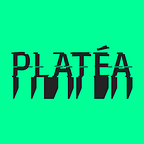Double speed and quality of your Powerpoint Template
Summary: Putting the content of the slides into tables will speed up the filling of templates, reduce the manual work of content management. By working only with text and not worrying about other elements on the slide, placing them in a table makes life easier for your users, they will not need to move anything, the table itself will help you place icons, borders and backgrounds automatically. It does not require special skills from the users.
Problem
PowerPoint is a popular program in which almost all of us have worked or heard in one way or another. It is often used for simple presentations. If you need to show more information or more data, convey to the client a document format that will talk about business numbers or contain a report on the work done and you will often reuse it, in this version of using this program you will encounter the problem of filling out such bulk document.
Due to the different amount of text, you have to move and align all the elements on the slide relative to each other, such as icons, other text blocks, and graphics.
When creating new text blocks, we accidentally added other fonts and their weight with size and spent extra time setting them up in a uniform style and changing colors.
Opportunities
Using the tabular approach, you can set all these parameters in advance, and the user does not have to spend extra time on this. You can create business reports, sales decks, kick off decks and other templates for your project.
By improving your templates, you will receive the following benefits:
· Speed
· Visual quality
· Convenience
· Visibility
· Data structure
· Quick learning to use
· Presentability
· Ease of creating new templates or editing existing ones
Basic Rules
Main types of tables (in my practice):
· Dashboard
· Two Columns
· Lists
The main elements of the table:
Cell width — there is a standard minimum column width below which the cell will not shrink in any table, (you can change this minimum value, select the table and go to the Layout tab in the column field.
Table height — set by the font size (the fonts themselves do not affect the height of the cell), if cells have different font sizes in one row, the height of the entire row determines the largest font size.
Skeletal basis — if we want to fix the minimum width of our table, then we need to leave at least one line consisting of minimum columns. It’s useful to know that you can influence the margins inside a table cell, increase or decrease them, or even remove them completely.
Filling in the table:
Merging cells:
· for icons
· for text
· for empty areas (negative space)
· for painting borders
Icons — if an icon is added to the table as a cell background, it adapts to the cell’s proportions. Therefore, I chose a square shape for convenience — to fix the cell size, you need to select the correct ratio of the number of columns and the height of the cell font, after which we will get a fixed square that will not allow the icon to be distorted when the table is reduced. Should the cell have a certain fill color in addition to the icon, it will not be added to the icon itself, because when importing an svg icon without a background, the cell has a transparent background. By the way, I recommend loading icons in svg format into tables for high-quality display, since the icon will increase proportionally with the cell.
Text — by selecting the entire cell, we set the size and color for the text, which will allow, in case of deleting the text not to lose the basic settings in the cell itself. But be careful, by reducing the base padding you can indirectly affect the minimum column width.
Indents in a cell — are indents for text relative to all edges, left, top to bottom, if you do not have enough space for your text, you can select the number of cells you need and reduce these indents. (Instructions: select the cell(s) and go to Home/Align Text/Align Text Options…) Be careful when selecting the entire table and changing these cell paddings globally because you can lose the minimum fixed table width.
To avoid this, while expanding the internal space inside the cell for text and keeping the minimum table width, it is enough to keep the “skeletal basis” one line without changing the padding inside her cells.
Borders — a great element to help you style your table around the edges and inside them. When the front has a dark background in the cells, and there are no partitions in the table (especially internal ones), then when filling in such a table, all cell borders that do not have a colored state will be highlighted.
Reset table parameters — if you have changed the margins parameters inside the cells and the table behaves unpredictably when the table is resized down, select all the cells in the table (or in a certain row) and go to the “Layout” tab, click on “Cell Margins” and select “Normal”.
Examples
Practice
I prepared examples of creating templates in the PowerPoint file, where you can download this guide (find it at the end of the article), try using my example tables and to draw your own templates. A few slides from my guide can be found below. This is a detailed step-by-step instruction for creating one of the variants.
Let’s continue in the guide file.
If you have your own unique cases of using the table approach or other cool things in PowerPoint, I will be glad to talk with you and enrich our experience.
Author: Yurii Hurtovyi
LinkedIn: https://www.linkedin.com/in/yurii-hurtovyi-243214174/
